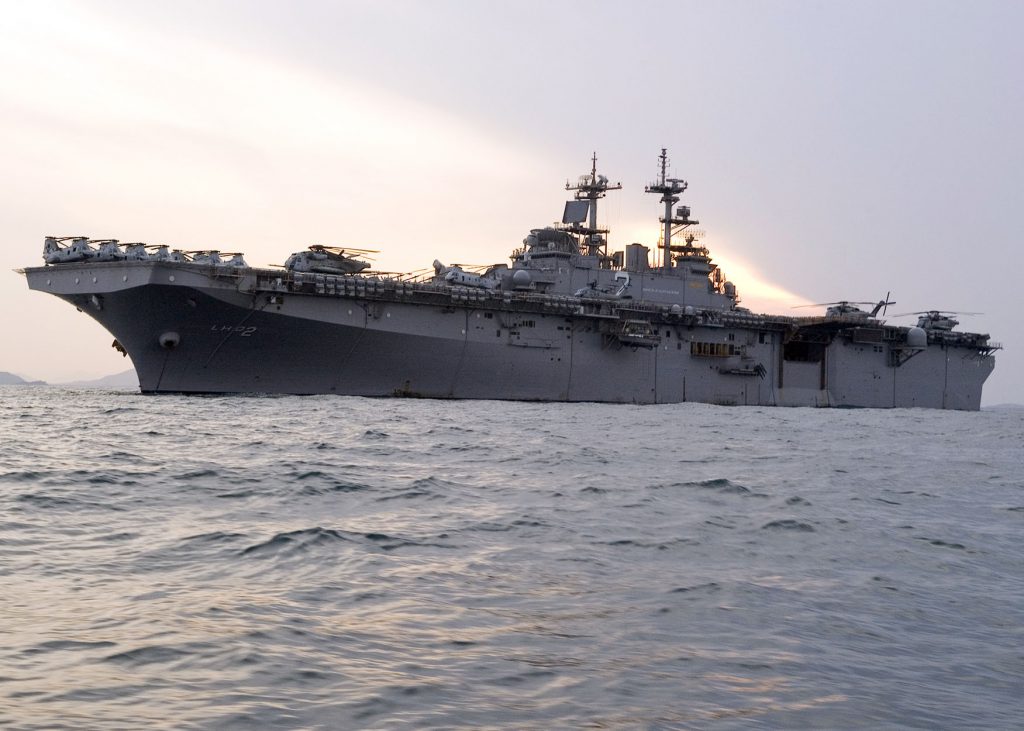While the United States and European economies continue to flounder after the 2008 crash, China muscled past Japan last year and became the world's No. 2 economy, a notice that the global economic order is shifting.
China also replaced the United States as the world's biggest buyer of crude oil. India is now the fourth largest oil buyer and in 2025 will top China as the most populated country. Both India and China's middle class are now larger than the population of the United States, and both countries now import the same low-tech products they once produced for the West.
With an energy, enthusiasm, and balance of payments surplus that is lacking in the West, the 21st century is looking to be the Asian Century, with its center of gravity the maritime area reaching from the Indian Ocean to the South China Sea. But to maintain this boom, economic growth and civil stability is the order of the day, which means national security in Asia is maintaining secure trade lanes for commerce, food, and reliable energy imports.
The Asian goal is stability. Thirty-seven countries, containing a third of the world's population, border the Indian Ocean, while the most prosperous segment of China's population borders its seacoast. Eighty-five percent of China's oil imports, along with its lifeline of raw material imports and manufactured exports, pass through the Indian Ocean-South China Sea, while India's energy lifeline runs from Hormuz to the Indian Ocean.
With growing populations, the importance of economic growth and political stability remains paramount, and both India and China are in a rush to modernize their militaries in order to guarantee that stability.
But other Asian efforts to modernize are painfully slow; their continued urban growth stresses already inadequate basic services and economic opportunities. Many governments are unable to provide even minimal basic services as local issues such as water shortages, sanitation, chronic unemployment, gangs, and overpopulation fester until erupting into a crisis. With most of the developing world's population living within 150 miles of the seacoast, the Indian Ocean-South China Sea region will be – for good or bad – central to world events.
All fascinating – but in times of massive budget deficits, does this affect the United States?
Yes it does. Anxious to be recognized as the economic powerhouse that it is, China is attempting to replace the United States for primacy in Asia. The rivalry is not purely military, but rather one of building a navy that can also project power into the regions where China wants to gain long-term access to energy and food – and to replace America as the arbiter of events in Asia. This is not only a threat to America's status as "the" superpower, but also is worrying the other Asian countries – who are afraid America either cannot or will not come to their aid if requested.
To demonstrate their ability to project power, last November the Chinese held a major naval exercise ("Jiaolong 2010") in the South China Sea, massing 1,800 Marines and more than 100 ships, submarines and aircraft for a live-fire display of China's growing naval capabilities. Xinhua News quoted a Chinese military analyst as saying that the maneuvers were staged in part because unnamed nations have intruded in the South China Sea in recent years, therefore "it's time to oppose these interventions," he told observers from 40 countries.
In the last 10 years China has quietly built the world's largest fleet of diesel-powered, ultra-quiet submarines, recently put its first aircraft carrier into operation, is building an amphibious fleet patterned after the Marine-Navy amphibious force, and is building its own stealth jet fighter.
To counteract China's huge naval build-up, the Australians are having two big-deck amphibious vessels built, India is buying older amphibious ships from the U.S. Navy, and Vietnam, Malaysia, and Indonesia are buying submarines. All the countries fear the likelihood of America getting involved in an intra-Asian-Pacific trade or boundary dispute is very low, and they are planning accordingly.
A Cheaper and More Effective Approach
America needs a strategy that encompasses military, economic, and diplomatic efforts, all working together:
* The strength of the American blue-water navy is unparalleled, but without an equivalent enemy it is tantamount to overkill. The 21st century world is one of irregular warfare, non-state enemies, and the need for a mindset that promotes counterinsurgency operations coming from either land or sea. Preferred access to the many Asian-Pacific ports will be of utmost importance; the challenge to America is to build relationships with the citizens and governments of Asian countries – exactly the sort of mission at the smaller ships of the Marine-Navy amphibious fleet excel.
* Regional trade pacts serve to tie the countries together; in addition to the Bay of Bengal Initiative, ASEAN (Association of Southeastern Asian Nations) has forged a regional power bloc with six major Asian-Pacific powers – Australia, India, New Zealand, Korea, Japan, and China – signing a trade agreement. This rising Asian-Pacific bloc rivals the EU in capital and importance, and the United States must learn to co-exist in partnership rather than domineering.
With threats to world or hemispheric stability expected to be primarily irregular, it's the amphibious fleet that enables America to proactively address potential situations before they erupt. America's objectives are straightforward: to enhance regional security and stability.
In every case since 1991's Desert Storm, the quickest, most effective, and most inexpensive response to a crisis has not been a carrier battle group lying over the horizon, but rather the very visible presence of the carrier-like amphibious ships sitting offshore with Marines providing humanitarian aid into a disaster zone, evacuating American citizens, or interacting with local citizens – as they did in assisting the Japanese directly after March's horrific tsunami, the Haitian earthquake, and Bangladeshi typhoons. That's projecting power in a method the Chinese cannot, and in a non-threatening manner the locals and their governments appreciate.
The Navy's next super-carrier is costing $ 13 billion – without fighter planes and crew. The concern is that America is procuring unnecessary and expensive weapons systems that will leave the United States unable to project an appropriate global presence where and when required. As Retired Adm. Joe Sestak said, "Projecting power from the sea will become more important in the coming years. The issue is how to do it correctly."









